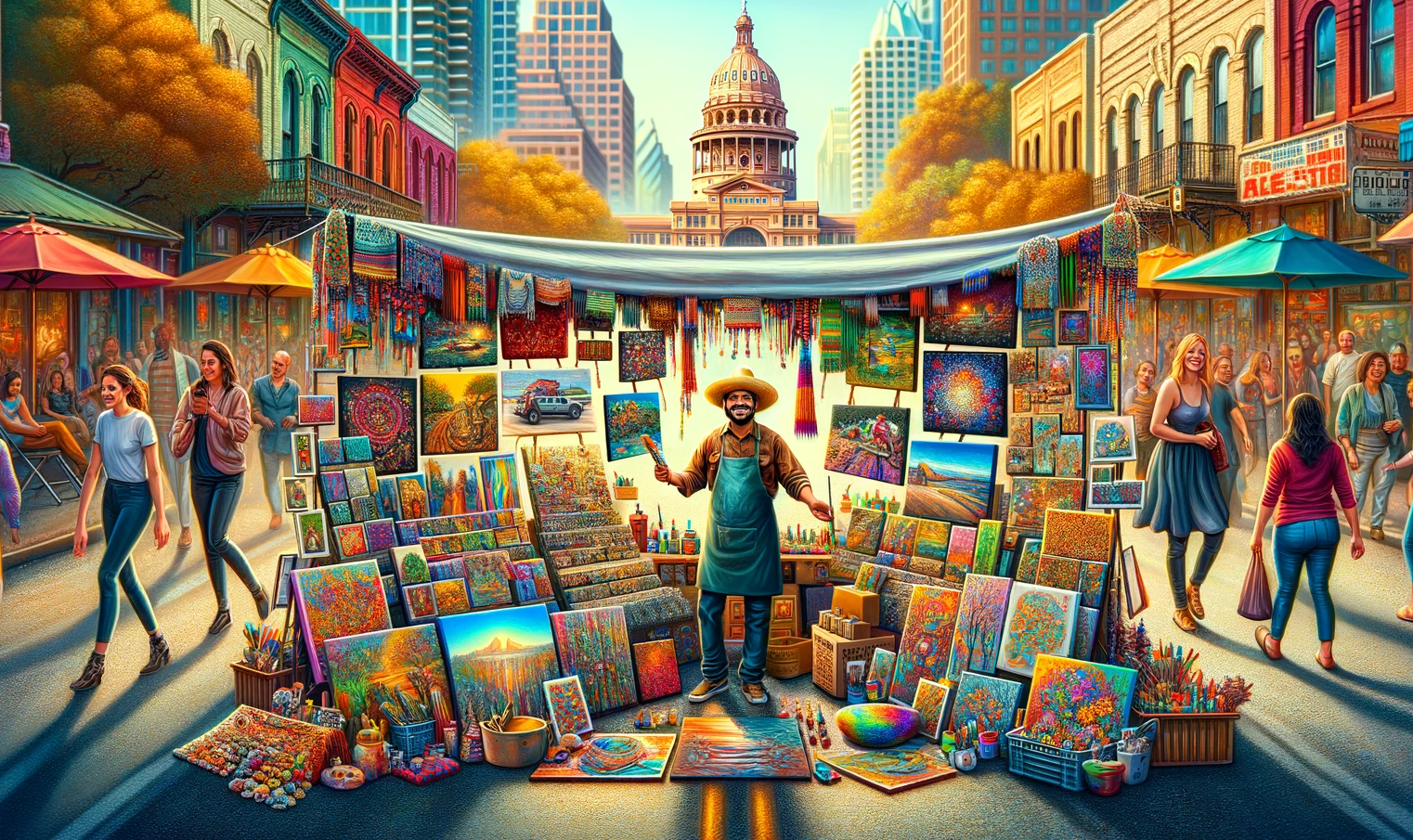Introduction
Austin, Texas, often celebrated for its live music and tech scene, is also a burgeoning canvas for the arts. The city’s vibrant art scene, ranging from street murals to high-end galleries, plays a significant role in shaping its identity. This cultural richness not only enhances the city’s appeal but also has a tangible impact on its real estate market. In this blog, we explore how Austin’s thriving art scene influences property values, neighborhood development, and the overall appeal of the city’s living spaces.
Austin’s Art Scene: An Overview
The art scene in Austin is as diverse as it is dynamic. It encompasses a wide array of expressions, from the colorful graffiti at Hope Outdoor Gallery to the prestigious collections in The Contemporary Austin. The city’s calendar is dotted with art festivals like the East Austin Studio Tour and the West Austin Studio Tour, which draw crowds from all over the nation. These events, along with renowned institutions like the Blanton Museum of Art, not only contribute to Austin’s cultural fabric but also enhance its attractiveness as a place to live and work.
Attracting a Diverse Population
Austin’s eclectic art scene is a magnet for a wide range of individuals. Artists, creatives, and cultural enthusiasts are drawn to the city, enriching it with their diverse perspectives and talents. This influx contributes to the vibrancy of certain neighborhoods, making them hotspots for cultural activities and community engagement. Areas known for their artistic flair tend to attract a dynamic mix of residents, which in turn creates a lively, inclusive community atmosphere that is highly appealing to potential homebuyers and renters.
Impact on Property Values
The presence of a robust art scene can have a direct impact on real estate values. Neighborhoods that are rich in cultural amenities often see an increase in property demand, leading to higher home prices and rental rates. In Austin, areas that host art galleries, studios, and cultural events are particularly sought after. The desirability of living near these artistic hubs translates into a willingness to pay a premium for properties in these areas, thereby boosting the overall real estate market in the city.
Art as a Catalyst for Neighborhood Revitalization
Art has a transformative power in urban settings, and Austin is no exception. Several neighborhoods in the city have experienced revitalization largely driven by the arts. Areas that were once overlooked have become thriving artistic hubs, attracting new businesses, cafes, and boutiques. The influx of galleries and studios often marks the beginning of this transformation, gradually followed by improved infrastructure and increased public interest. This revitalization not only enhances the neighborhood’s aesthetic appeal but also contributes to a sense of community and pride among residents.
Art-Inspired Architectural and Design Trends
In Austin, the influence of the art scene extends into the realm of architecture and interior design. The city’s new residential and commercial developments often incorporate artistic elements, from bold murals to innovative architectural designs that reflect Austin’s creative spirit. This trend towards art-inspired living spaces is increasingly appealing to buyers and renters seeking unique and culturally rich environments. As a result, properties that showcase these artistic influences tend to stand out in the real estate market.
The Role of Art in Marketing Properties
Austin’s real estate agents and developers are keenly aware of the value art adds to properties. Art-centric marketing strategies are becoming more common, with agents highlighting proximity to art venues or incorporating art into staging and open houses. Developments that feature public art installations or collaborations with local artists are particularly attractive, offering an added layer of cultural engagement to potential buyers. This approach not only enhances the property’s appeal but also aligns with Austin’s identity as a city that values and supports the arts.
Challenges and Opportunities
While the integration of art into Austin’s real estate market brings numerous benefits, it also presents challenges. One significant concern is the risk of gentrification, where the original artistic community may be priced out. Balancing development with the preservation of the city’s artistic character is crucial. However, these challenges also present opportunities for sustainable growth that supports both the art community and the real estate market, ensuring that Austin remains a vibrant and inclusive city.
Conclusion
Austin’s art scene is more than just a cultural asset; it’s a driving force in the city’s real estate market. From revitalizing neighborhoods to influencing architectural trends and marketing strategies, art plays a pivotal role in shaping Austin’s living spaces. As the city continues to grow, the symbiotic relationship between art and real estate is likely to strengthen, further cementing Austin’s reputation as a dynamic and culturally rich place to live.
Interested in exploring real estate opportunities in Austin’s vibrant neighborhoods? Call or Text Brendan Sanford today at (512) 696-0673, or email at [email protected].
